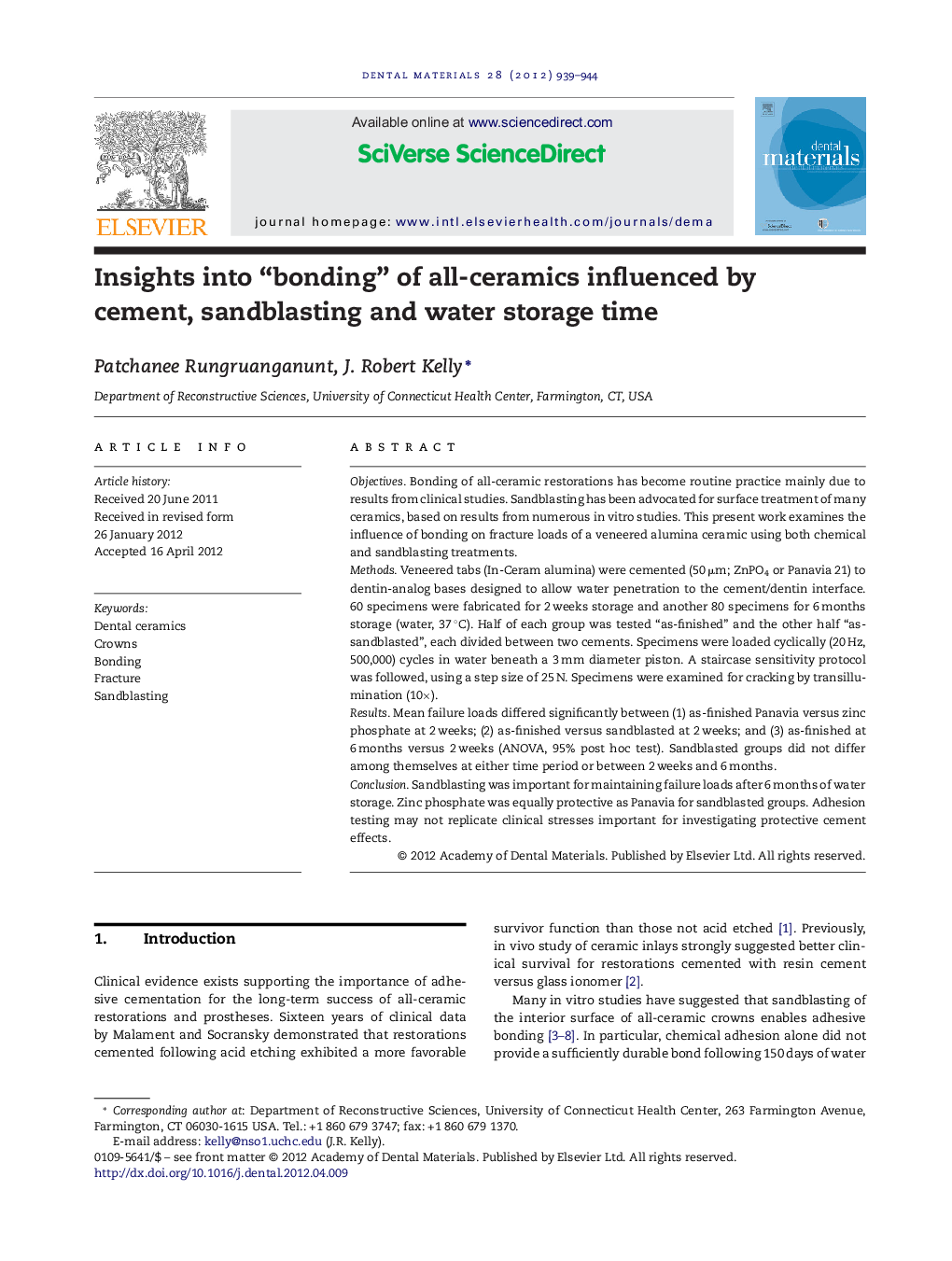| Article ID | Journal | Published Year | Pages | File Type |
|---|---|---|---|---|
| 1421313 | Dental Materials | 2012 | 6 Pages |
ObjectivesBonding of all-ceramic restorations has become routine practice mainly due to results from clinical studies. Sandblasting has been advocated for surface treatment of many ceramics, based on results from numerous in vitro studies. This present work examines the influence of bonding on fracture loads of a veneered alumina ceramic using both chemical and sandblasting treatments.MethodsVeneered tabs (In-Ceram alumina) were cemented (50 μm; ZnPO4 or Panavia 21) to dentin-analog bases designed to allow water penetration to the cement/dentin interface. 60 specimens were fabricated for 2 weeks storage and another 80 specimens for 6 months storage (water, 37 °C). Half of each group was tested “as-finished” and the other half “as-sandblasted”, each divided between two cements. Specimens were loaded cyclically (20 Hz, 500,000) cycles in water beneath a 3 mm diameter piston. A staircase sensitivity protocol was followed, using a step size of 25 N. Specimens were examined for cracking by transillumination (10×).ResultsMean failure loads differed significantly between (1) as-finished Panavia versus zinc phosphate at 2 weeks; (2) as-finished versus sandblasted at 2 weeks; and (3) as-finished at 6 months versus 2 weeks (ANOVA, 95% post hoc test). Sandblasted groups did not differ among themselves at either time period or between 2 weeks and 6 months.ConclusionSandblasting was important for maintaining failure loads after 6 months of water storage. Zinc phosphate was equally protective as Panavia for sandblasted groups. Adhesion testing may not replicate clinical stresses important for investigating protective cement effects.
